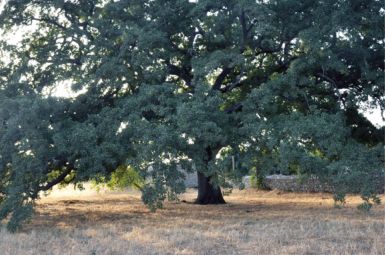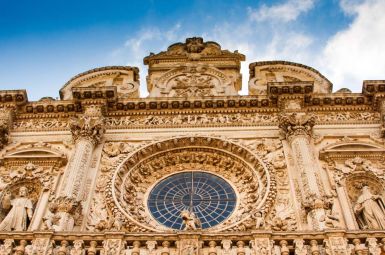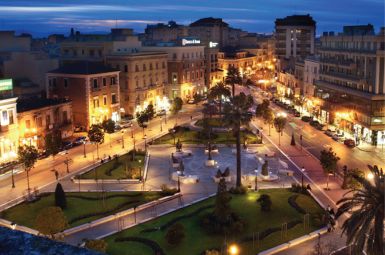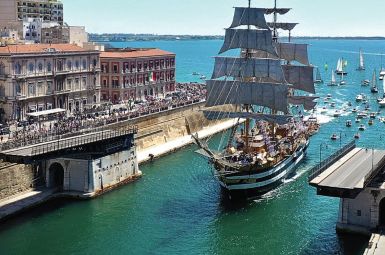
Civitella del Tronto
Il Borgo di Civitella del Tronto
Civitella del Tronto: Dove la Storia Borbonica Incontra la Maestosità d’Abruzzo
Civitella del Tronto (TE) non è semplicemente uno dei “Borghi più Belli d’Italia”; è una fortezza naturale, un’opera d’arte militare che ha segnato la storia italiana. Arroccata su una rupe che domina la Val Vibrata, questa gemma abruzzese offre un viaggio emozionante tra la resilienza della pietra e la dolcezza del paesaggio. Civitella è un luogo dove il tempo non è trascorso, si è fermato, intrappolato tra le sue mura inespugnabili.L’Ultima Grande Fortezza: Il Baluardo Eretico
Il cuore e l’anima di Civitella è l’imponente Fortezza Borbonica, un monumento che non ha eguali e che definisce lo skyline della zona.- Gigante d’Europa: Con i suoi oltre 500 metri di lunghezza, è una delle più grandi opere di ingegneria militare in Europa. Costruita principalmente sotto il dominio spagnolo e poi borbonico, fungeva da strategico avamposto di confine tra il Regno di Napoli (e poi delle Due Sicilie) e lo Stato Pontificio.
- La Resa Finale: La sua fama è legata all’epico assedio che la vide cedere alle truppe piemontesi solo il 20 marzo 1861, giorni dopo la proclamazione del Regno d’Italia. Un atto di irriducibile lealtà che la consacrò come simbolo dell’onore borbonico.
- Esperienza Immersiva: Varcare i suoi camminamenti coperti, le ampie piazze d’armi e le antiche cisterne significa ripercorrere la storia militare, con vista mozzafiato che spazia dal Gran Sasso fino al Mare Adriatico.
Il Borgo Sospeso: Segreti e Architetture
Sotto la protezione della Fortezza, il borgo si snoda in un tessuto medievale intatto, fatto di pietra e travertino.- La Ruetta: Non si può visitare Civitella senza avventurarsi nella Ruetta, un vicolo stretto e suggestivo, tanto angusto da contendersi il primato di “via più stretta d’Italia”. Un corridoio non solo pittoresco, ma ideato come ingegnoso dispositivo difensivo.
- Palazzi e Fede: La Porta Napoli, ornata dallo stemma civico, e le chiese storiche come la Chiesa di San Francesco, con il suo portale gotico, raccontano secoli di vita civile e religiosa.
Un Sapore di Confine: La Cucina della Resilienza
La gastronomia riflette la sua duplice anima: la semplicità montana e il retaggio borbonico.- Le Ceppe: Il piatto simbolo sono i Maccheroni con le Ceppe, una pasta fresca che richiede un’antica e complessa manualità, tradizionalmente condita con un ragù robusto, espressione di una cucina essenziale e vigorosa.
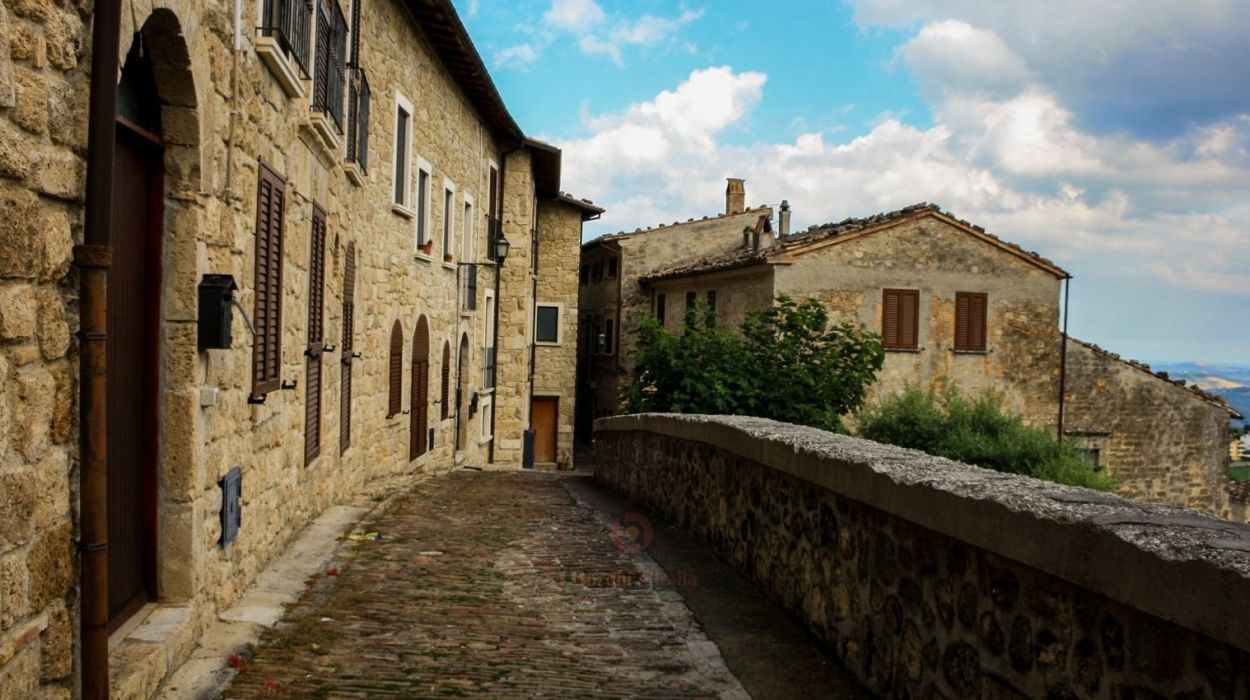
Il Borgo d’Italia
tutto da scoprire ed esplorare
Monumenti
Civitella del Tronto Monumentale: La Storia Scritta nella Pietra della Fortezza
Civitella del Tronto (TE) non si limita a ospitare monumenti: è essa stessa un imponente monumento, un borgo fortificato dove ogni pietra racconta una storia di assedi, eroismo e confini. Il suo prestigio deriva dalla sua Fortezza, l’ultimo baluardo del Regno delle Due Sicilie, che domina il paesaggio con una grandezza che non ha eguali in Italia.
Ecco i monumenti essenziali che definiscono l’identità unica di questo borgo abruzzese.
1. La Fortezza di Civitella del Tronto: Il Gigante di Pietra
L’opera di ingegneria militare che incarna la storia di Civitella e la sua funzione di confine.
- Grandezza Senza Pari: La Fortezza è una delle più imponenti in Italia e la seconda più grande in Europa per estensione. Si sviluppa per oltre 500 metri di lunghezza lungo la cresta di roccia, coprendo un’area di circa 25.000 metri quadrati. La sua struttura è un capolavoro di architettura militare spagnola del XVI secolo, progettata per resistere ai moderni assedi con cannoni.
- L’Ultimo Baluardo: È celebre per essere stata l’ultima roccaforte borbonica a cadere per mano dell’esercito piemontese nel 1861, segnando simbolicamente la fine del Regno delle Due Sicilie.
- Il Percorso Storico: Al suo interno, i visitatori possono percorrere tre ampi camminamenti coperti e tre piazze d’armi (tra cui la scenografica Gran Piazza), oltre al Museo delle Armi Antiche, testimoni di secoli di vita militare.
2. Il Borgo Medievale e i Suoi Segreti
Ai piedi della Fortezza, il centro storico è un labirinto di vicoli e architetture che riflettono il suo ruolo di piazzaforte.
- La Ruetta: La Via Più Stretta d’Italia? Tra i vicoli pittoreschi si nasconde la Ruetta, un passaggio così angusto che si contende il primato di via più stretta d’Italia. Non è solo una curiosità turistica: in passato, la sua esiguità serviva da difesa naturale contro gli invasori.
- Porta Napoli: L’antica porta di accesso al borgo, un tempo il varco principale per chi proveniva da Sud, oggi un suggestivo monumento che attesta l’antica cinta muraria e l’importanza del paese.
3. I Simboli di Fede e Onore
Le chiese e i monumenti commemorativi arricchiscono il tessuto storico e culturale del paese.
- Il Monumento a Matteo Wade: Situato nel centro storico, questo monumento neoclassico fu eretto per volere di Re Francesco I di Borbone in onore di Matteo Wade, l’ufficiale irlandese che difese eroicamente la Fortezza durante l’assedio francese del 1806. Un tributo all’onore e alla fedeltà borbonica.
- La Chiesa di San Francesco: Risalente al XIV secolo, questa chiesa colpisce per il suo pregevole portale gotico in travertino, e per gli affreschi e le opere d’arte sacra conservate al suo interno, testimonianza della vita religiosa del borgo.
Civitella del Tronto non è solo un borgo, è una lezione di storia a cielo aperto. I suoi monumenti sono un’irresistibile chiamata per chi cerca la grandezza architettonica e la memoria storica. Sei pronto a conquistare la Fortezza?
Curiosità
Civitella del Tronto: Storie Incredibili e Segreti del Baluardo Finale
Civitella del Tronto (TE) non è una semplice cittadina, è una roccaforte che racchiude secoli di storia di confine, assedi epici e leggende militari. La sua Fortezza, imponente e maestosa, non è solo architettura: è l’ultimo respiro di un regno e un tesoro di curiosità che la rendono unica al mondo.
Ecco gli aneddoti e i fatti sorprendenti che si nascondono tra le sue mura e i suoi vicoli.
1. Il Baluardo Eretico: L’Ultima a Cadere
La Fortezza di Civitella è passata alla storia per aver scritto l’ultima, indomita pagina del Regno delle Due Sicilie.
- La Fine di un Regno: Civitella del Tronto è stata l’ultima fortezza borbonica ad arrendersi all’assedio delle truppe piemontesi, capitolando il 20 marzo 1861, ben tre giorni dopo la proclamazione ufficiale del Regno d’Italia (17 marzo 1861). Un atto di fedeltà e resistenza che la consacrò come simbolo della lealtà borbonica.
- La Fortezza Più Grande: La struttura, lunga oltre 500 metri e distribuita su più livelli, è considerata una delle più grandi opere di ingegneria militare d’Europa per dimensioni, superata solo da Hohensalzburg in Austria. Un gigante di pietra progettato per controllare l’intero confine settentrionale del Regno di Napoli.
2. La Ruetta: Un Antico Dispositivo Anti-Invasione
Il labirinto del borgo medievale nasconde una delle curiosità più divertenti, ma con un risvolto strategico.
- Il Vicolo Più Stretto: Nel cuore del centro storico si trova la celebre Ruetta, un vicolo strettissimo che si contende con altri comuni italiani il titolo di via più stretta d’Italia.
- Strategia Difensiva: Al di là del folklore, la Ruetta non era solo una curiosità architettonica: in caso di invasione del borgo, un passaggio così angusto costringeva gli assalitori a procedere in fila indiana, neutralizzando la loro forza d’attacco e facilitando la difesa degli abitanti dall’alto.
3. Il Mistero degli Scheletri Ritrovati
Il coraggio dei difensori della Fortezza è una storia che è riemersa in modo drammatico e recente.
- L’Ultimo Sacrificio: Durante i lavori di restauro della Chiesa di San Giacomo all’interno della Fortezza (distrutta in parte dai bombardamenti finali del 1861), furono rinvenuti gli scheletri degli ultimi irriducibili difensori. Si trattava di soldati fedelissimi che, anche dopo la capitolazione ufficiale, continuarono a resistere asserragliati, morendo sotto il fuoco incrociato. Un ritrovamento che ha dato un volto tangibile all’eroismo di Civitella.
4. Vista Panoramica: Dal Gran Sasso all’Adriatico
La posizione strategica della Fortezza non offriva solo vantaggi militari, ma anche uno spettacolo naturale ineguagliabile.
- Il Balcone d’Abruzzo: Dai punti più alti della Fortezza, in particolare dalla Gran Piazza, lo sguardo spazia per decine di chilometri. Nelle giornate limpide è possibile ammirare contemporaneamente le cime innevate dei massicci del Gran Sasso e della Majella, fino a scorgere il blu profondo del Mare Adriatico.
Civitella del Tronto è un’esperienza che va oltre la visita turistica: è un viaggio tra storie di eroi, tattiche militari e segreti racchiusi tra le mura. Sei pronto a sentire l’eco della storia in questo luogo straordinario?
Personaggi
Civitella del Tronto: L’Eroismo dei Non Nativi e la Nobiltà di Spirito
Civitella del Tronto (TE), baluardo di confine e roccaforte di inestimabile valore storico, non ha generato una lunga lista di artisti rinascimentali o scienziati famosi. La vera fama dei “personaggi” di Civitella è intrinseca alla sua storia militare, legata indissolubilmente a chi vi ha combattuto, difeso la bandiera e, in molti casi, sacrificato la vita.
Per comprendere le personalità di Civitella, bisogna guardare oltre il luogo di nascita e onorare la fedeltà e l’eroismo che le mura della Fortezza hanno ispirato.
L’Eroe della Resistenza: Matteo Wade
Il nome che risuona più forte nella storia di Civitella non è abruzzese, ma straniero, divenuto simbolo di onore e tenacia.
- Il Difensore Irlandese: Il Maggiore Matteo Wade era un ufficiale irlandese al servizio del Regno di Napoli. La sua fama è legata all’epico assedio del 1806, quando guidò la guarnigione borbonica in una strenua resistenza di oltre quattro mesi contro le ben più forti truppe napoleoniche di Giuseppe Bonaparte.
- La Memoria Eterna: Sebbene alla fine dovette capitolare (onorevolmente), la sua tenacia trasformò un fallimento militare in una vittoria morale. Il Monumento a Matteo Wade, eretto nel centro storico per volere di Re Francesco I di Borbone, celebra la sua figura come emblema della lealtà verso la corona.
I Fedelissimi Senza Nome: Ultimi del Regno
La storia più toccante di Civitella è quella dei suoi ultimi difensori, simbolo della resistenza all’Unità.
- Gli Irriducibili del 1861: Dopo la proclamazione del Regno d’Italia (17 marzo 1861), la Fortezza rimase l’ultima roccaforte borbonica a non arrendersi. Un manipolo di soldati e ufficiali fedelissimi continuò a resistere per giorni, nonostante il resto del Regno avesse ceduto.
- L’Eroismo Sconosciuto: Molti di questi valorosi caddero sotto il fuoco piemontese e i loro scheletri, ritrovati durante i restauri della Chiesa di San Giacomo all’interno della Fortezza, sono la prova silenziosa di un eroismo non celebrato nei libri di storia ufficiali. Essi sono i veri “personaggi” del luogo: l’incarnazione dello spirito di non-resa.
La Nobiltà Colta: I Custodi della Memoria
Nel borgo sono stati attivi studiosi e figure che hanno preservato il patrimonio culturale.
- Figure Erudite Locali: Sebbene non abbiano raggiunto fama nazionale come grandi artisti, Civitella ha prodotto nel corso dei secoli una classe di eruditi e notabili che, attraverso la gestione feudale e la conservazione documentale, hanno mantenuto viva l’importanza politica e culturale di questo avamposto di confine. Il Museo NINA nel borgo, ad esempio, custodisce collezioni e oggetti che raccontano la vita delle famiglie nobili del luogo e il suo ruolo di snodo commerciale.
A Civitella del Tronto, la celebrità è un fatto di coraggio, non di nascita. Onorare i suoi “personaggi” significa ricordare l’ultima bandiera di un regno e lo spirito indomito di chi ha resistito fino all’estremo sacrificio. Sei pronto a conoscere il volto della vera fedeltà?
Ricette Tipiche
Civitella del Tronto: La Cucina del Baluardo tra Forte Resilienza e Sapori Borbonici
Civitella del Tronto (TE) non è nota solo per la sua imponente Fortezza, ultimo baluardo del Regno delle Due Sicilie: la sua cucina è una narrazione storica. Le ricette tipiche sono il risultato di un sapiente equilibrio tra la semplicità montanara abruzzese e i retaggi delle guarnigioni militari borboniche. I piatti qui sono essenziali, saporiti e legati alla terra, ma con qualche tocco di creatività militare.
Dalla pasta che richiede una manualità antica, ai secondi nati sotto assedio, ecco i sapori che definiscono Civitella del Tronto.
1. Il Simbolo della Tradizione: Maccheroni con le Ceppe
Il vero emblema culinario di Civitella è una pasta fresca che richiede maestria e pazienza, un patrimonio a rischio di estinzione.
- La Tecnica Artigianale: I Maccheroni con le Ceppe (o maccaru’ nghe li cèpp) sono una pasta lavorata a mano con farina e acqua (oggi spesso anche uova). La loro forma unica, simile a grossi bucatini, si ottiene arrotolando l’impasto attorno a un sottile bastoncino (la ceppetta o un ferro da calza). Questa manualità, difficile da replicare, rende il piatto un vero e proprio atto d’amore per la tradizione.
- Il Condimento Ideale: La consistenza porosa e robusta delle Ceppe le rende perfette per un ragù rustico di carni miste (manzo, maiale, agnello) a lenta cottura, spesso arricchito con funghi porcini raccolti sui vicini Monti Gemelli, e una spolverata di pecorino locale.
2. L’Eredità del Periodo Borbonico
L’atmosfera militarizzata della Fortezza ha ispirato piatti veloci, nutrienti e saporiti, adatti alla vita da campo.
Filetto alla Borbonica (o Franceschiello)
Un piatto che si presenta come un panino, ma è molto di più, legato al nome dell’ultimo re di Napoli.
- Il Comfort Food del Soldato: Questa specialità è un “panino” (spesso realizzato con pane casereccio o una fetta di pane morbido) farcito con carne di manzo o vitello, mozzarella e acciughe, il tutto sapientemente insaporito con una spruzzata di vino Marsala. La combinazione dolce-salata-sapida è un esempio di cucina d’assedio ingegnosa.
Timballo di Scrippelle in Salsa Classica
Sebbene il Timballo sia un classico teramano, la sua versione qui è maestosa, legata ai banchetti della guarnigione.
- Complessità e Ricchezza: Si tratta di un piatto da festa, realizzato con strati alternati di scrippelle (sottili crêpes salate), ragù di carni miste (a volte di tre carni), piccole polpettine (le pallotte), spinaci, formaggio e uova sode. Un capolavoro stratificato che richiede ore di preparazione e una grande convivialità.
3. I Sapori della Montagna
La vicinanza al confine tra Abruzzo e Marche si riflette nella scelta delle carni e degli ingredienti.
- Carni e Tartufi: La cucina di Civitella valorizza moltissimo la selvaggina, come lo spezzatino di agnello o cinghiale, spesso accompagnato da funghi porcini o dal pregiato tartufo (bianco o nero) che si trova nei boschi circostanti.
La tavola di Civitella del Tronto è un viaggio nel gusto che inizia con la destrezza manuale delle ceppe e si conclude con la ricchezza delle tradizioni borboniche. Sei pronto ad assaggiare la storia?
